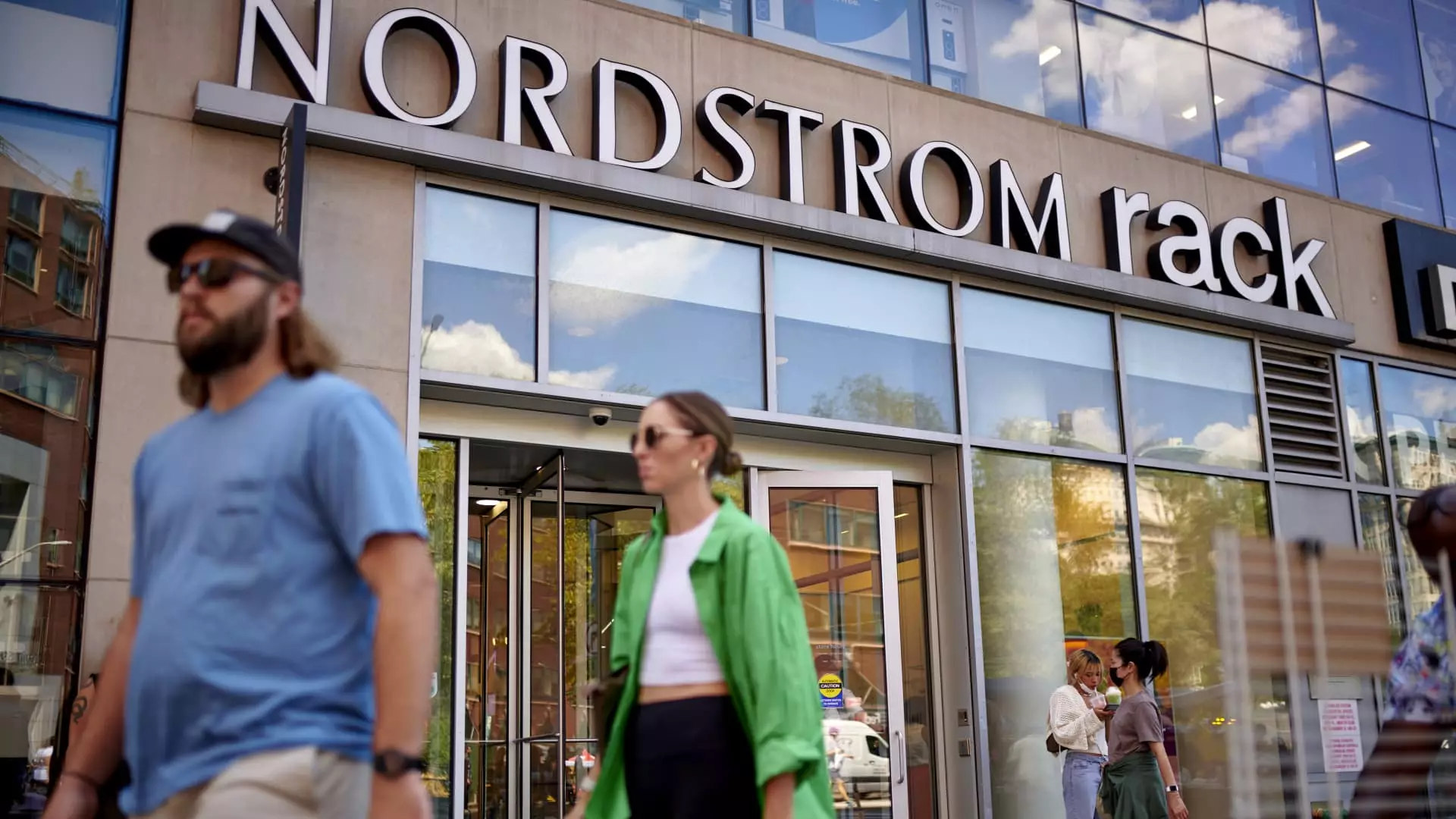In a period marked by economic turbulence and changing consumer behavior, Nordstrom has recently delivered an earnings report that defied Wall Street predictions, showcasing the department store’s commitment to cost reduction and operational efficiency. The Seattle-based retailer announced adjusted earnings per share of 96 cents, exceeding analyst expectations by 25 cents. This surprising performance highlights an underlying strength in Nordstrom’s business model despite the prevailing economic headwinds.
However, the optimism in Nordstrom’s report comes tempered with cautious guidance for the forthcoming fiscal year. The company revised its adjusted earnings per share estimate upwards to a range of $1.75 to $2.05, from the previous forecast of $1.65 to $2.05. Sales expectations remain muted, with projections indicating a slight decline to very modest growth from the prior year. Such guidance begs a deeper examination of the factors influencing these projections and the strategic maneuvers Nordstrom is employing to navigate this challenging landscape.
While the reported revenue of $3.89 billion showcases an increase of approximately 3.4% compared to last year, it slightly fell short of the $3.90 billion forecasted by analysts. This mixed performance reflects the complex dynamics of consumer spending amidst an inflationary environment where discretionary spending is increasingly scrutinized. The company’s comparable sales rose by 1.9%; however, questions arise regarding how sustainable this growth is, especially as consumers remain wary of high-interest rates and economic uncertainty.
Nordstrom’s ability to enhance gross merchandise value by 3.5% is a noteworthy accomplishment, yet the uncertainty about whether this increase stems from higher prices or increased volume complicates the narrative. As consumers tighten their belts, the retailer’s prediction of only modest growth indicates a cautious expectation for consumer sentiment in the not-so-distant future.
Nordstrom’s CEO, Erik Nordstrom, expressed optimism about the company’s trajectory, citing robust second-quarter results and a strong top-line performance. He highlighted the company’s success in enhancing gross margins and profitability, suggesting that strategic decisions made over the past months are beginning to bear fruit. Nonetheless, while the CEO’s outlook remains positive, the tempered guidance signals that the company is not complacent.
Nordstrom acknowledges the challenges of the present retail environment and is actively adapting its strategy to mitigate risks. The reported growth in profits over the last six months, from a net loss of $67 million the previous year to a profit of $83 million, illustrates a significant turnaround for the department store. This shift indicates that the company is not only addressing current challenges but is also strategically positioning itself for future growth.
One of Nordstrom’s core objectives has been to enhance its supply chain operations. The recent improvement in the delivery times for online orders—over 5% quicker—is a critical step in increasing customer satisfaction and reducing cart abandonment. Moreover, the retailer has invested in refining its merchandise distribution to both online customers and brick-and-mortar locations, a strategy that reflects a commitment to addressing the needs of its diverse consumer base.
The encouraging performance of Nordstrom Rack, the company’s off-price segment, is a pivotal aspect of its strategy. Sales surged by 8.8% in this division, suggesting that there is a viable market for discounted goods even in a cautious economic climate. By opening new Rack locations—11 so far this fiscal year with plans for at least 22 total—Nordstrom is effectively capturing a growing segment of consumers seeking affordability without sacrificing quality.
The broader landscape of off-price retail is undoubtedly competitive, particularly with industry leaders like TJX Cos. wielding significant market power. Nordstrom’s investment in expanding its Rack locations and hiring seasoned professionals from the off-price sector underscores its recognition of the growing demand for affordable fashion. The decision to pivot towards off-price retail highlights a strategic maneuver to not only capture market share but to also align with evolving consumer purchasing patterns.
As economic pressures remain in flux, the department store’s proactive stance in growing its off-price segment could prove essential to its long-term viability. By establishing a strong foothold in the off-price arena, Nordstrom aims to maintain relevance in an increasingly price-conscious market.
Nordstrom’s recent financial performance conveys a narrative of resilience and strategic adaptability. While the company grapples with economic challenges and cautious consumer behavior, its focus on cost management, supply chain improvements, and the growth of its off-price segment positions it to weather potential storms ahead. The contrast between its current achievements and tempered expectations provides a complex yet fascinating insight into the retail landscape, reflecting both the opportunities and challenges that lay on the horizon for Nordstrom. As the company continues to refine its strategies, the retail giant seeks to not only survive but thrive in an ever-evolving marketplace.

